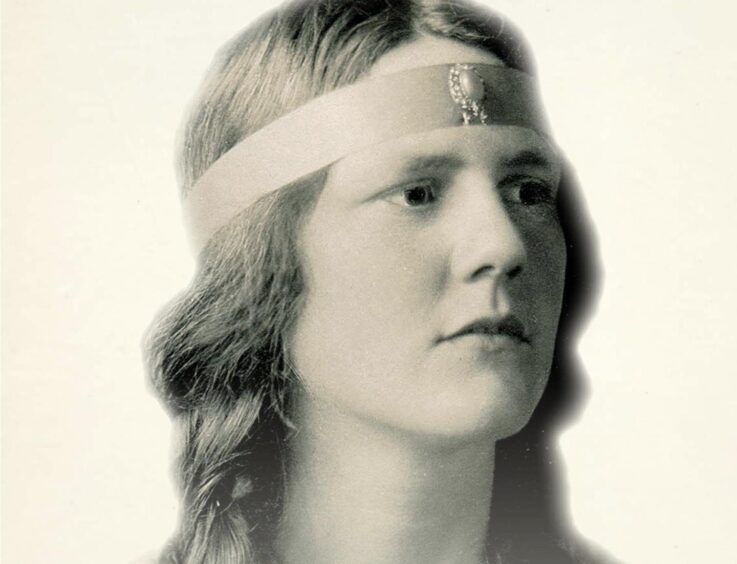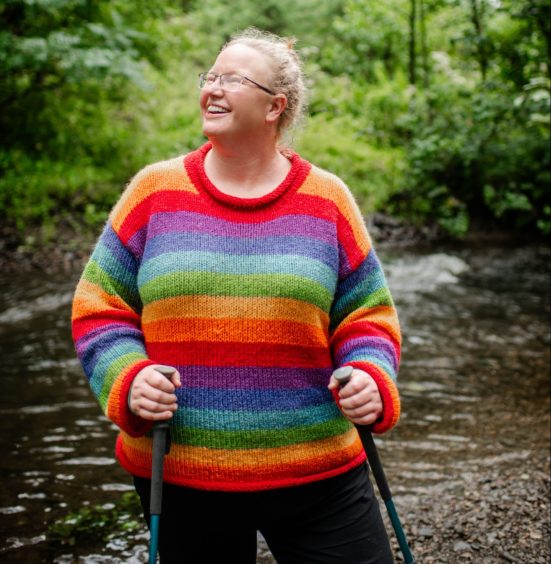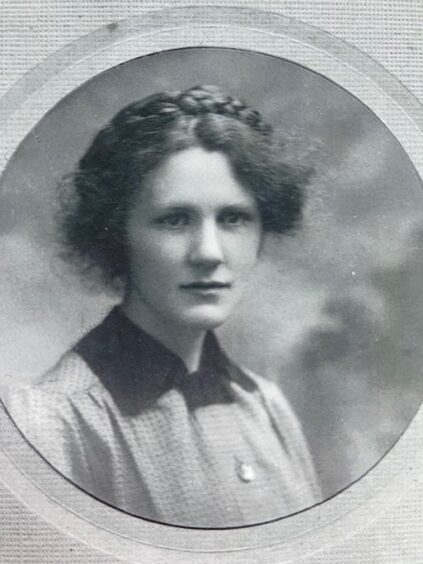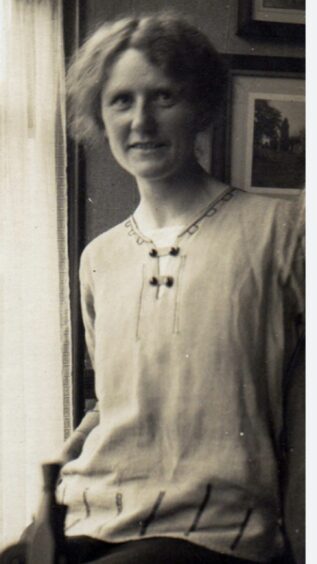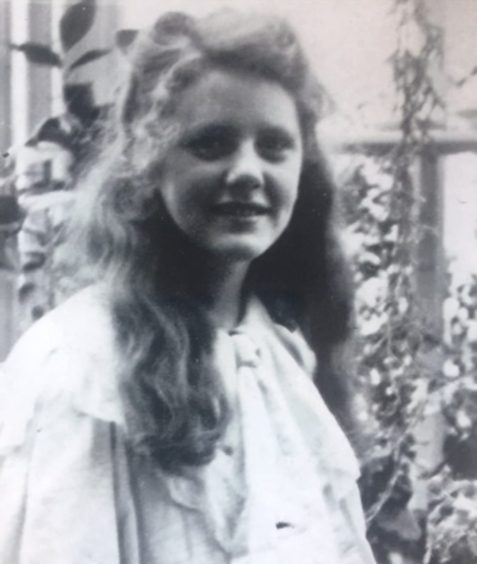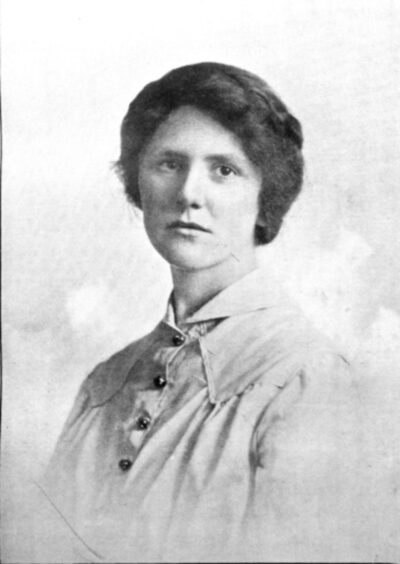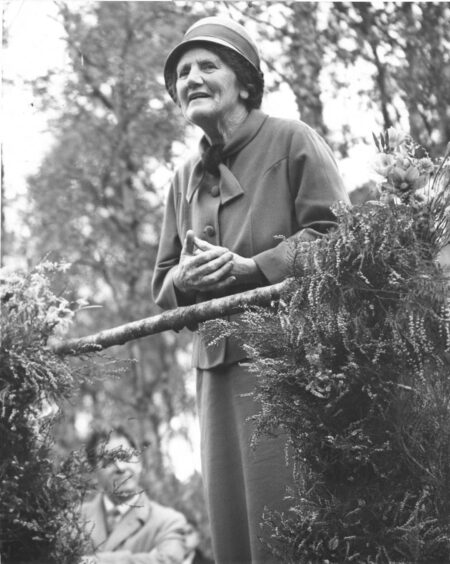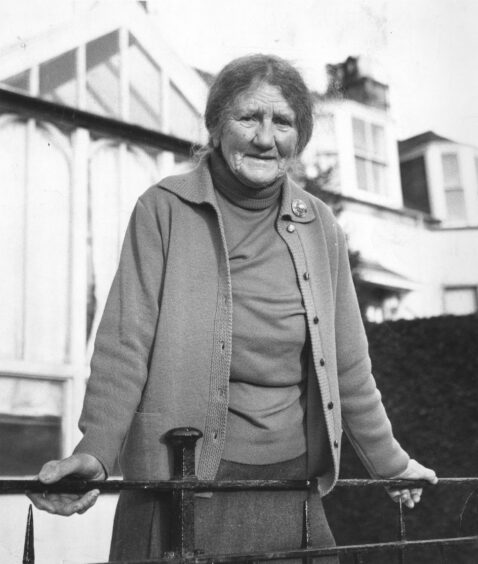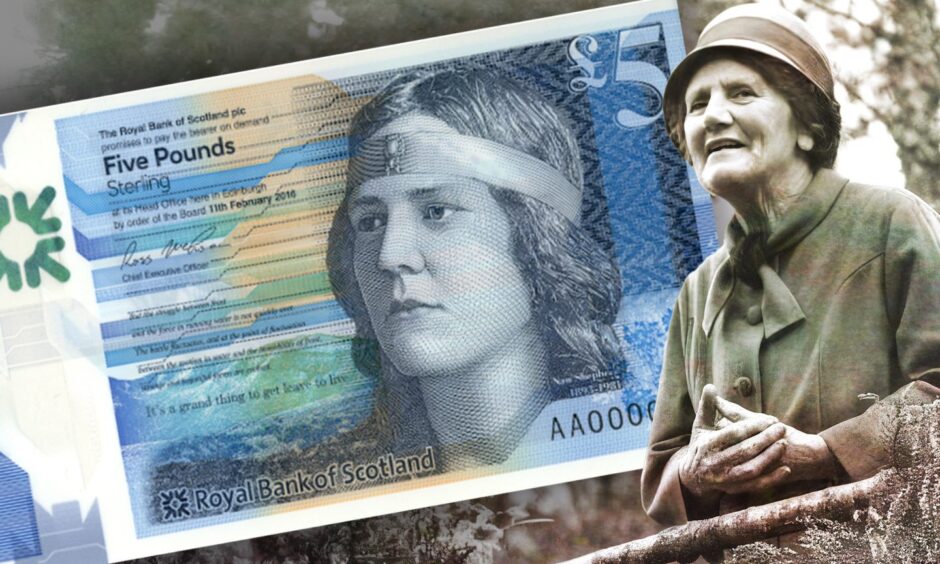
Is there another Nan Shepherd revival afoot after almost a decade?
Aberdeenshire-born Nan (1893-1981) became the first female writer to figure on a UK bank note in the new series of £5 notes issued by the Royal Bank of Scotland in 2016, then there was the placing of a commemorative plaque outside her former home in 2017.
This year there’s a new book, and a new play about her.
Her previously unseen correspondence has recently been gathered and published, and a new play based on the revelations of that book opens this week with its world-premiere at Pitlochry Festival Theatre (May 24).
The play is Nan Shepherd: Naked and Unashamed, staged and co-authored by Firebrand Theatre Company.
Co-writer Ellie Zeegen said: “In the play we discover how Nan was at the heart of the famous Scottish literary renaissance of the 1930s, but because she was a woman in a man’s world, she came to live much of her life in obscurity.
Unrequited love
“However, our research also newly reveals how a bruising unrequited love affair with her best friend’s husband, the free-thinking philosopher John Macmurray, may have inspired Nan’s solitary journey into the mountains.
“Here, through communing with the landscape, she finally gained the thrilling insight to surmount all these personal obstacles.”
Zeegen and Firebrand director Richard Baron worked closely with Dr Kerri Andrews who has recently published Nan Shepherd’s Correspondence, 1920-80. (Edinburgh University Press Books)
Kerri says the 250 letters she unearthed, many to other authors like Neil Gunn, Hugh MacDiarmid and Jessie Kesson, are full of insights into why she loved the hills.
Nan’s story
Nan was born in Cults in 1893 and stayed there most of her life until she died in Woodend Hospital in 1981.
She attended Aberdeen School for Girls and graduated from Aberdeen University.
From Dunvegan, the family home in Cults, she wrote poetry, novels and non-fiction for a few years and lectured at Aberdeen College of Education for many years —but as anyone with a love of nature and mountains knows, the Cairngorms were her true love and passion.
It wasn’t far to the Cairngorms from the family home, and Nan spent hours and days in the mountains.
Inspirational Living Mountain
Her signature work, The Living Mountain, written in the 1940s, has proved an inspiration to thousands of nature lovers, writers and walkers since Nan unearthed it from a drawer in 1977 and had it published.
Her relationship with the mountains is profound, unmistakably personal, sensual, almost sexual at times.
She describes the scent, the feel, the harshness, the danger and the ever-changing atmosphere of the mountains not as if looking at them as a bystander but immersed in them like an elemental spirit.
Kerri Andrews, currently based in Peebles, became interested in Nan when she wrote her as part of her book Wanderers: A History of Women Walking in 2020. (pub Reaktion)
She said: “I had an intellectual interest in Nan as a writer, and a shared interest in her as someone who also had a passion for walking in the Cairngorms. I wondered if she had any letters.”
Tracking down Nan’s letters
Kerri tracked down Nan’s voluminous correspondence at the National Library of Scotland.
“I found they contained lots of lovely insights into why she loved the hills and other aspects of her life which I hadn’t known much about.
It became Kerri’s mission to put Nan where she felt she belonged in literary history, and she tracked down all Nan’s letters, including some in Moray and at Cambridge University.
A British Academy mid-career fellowship funded Kerri to assemble and annotate the letters, and also to develop a play based on the letters, hence the collaboration with Firebrand.
Nan suddenly stopped writing
Kerri was struck by how Nan’s success in the 1930s as a poet and author of three novels set in the north-east suddenly evaporated.
“She’d been really famous and had lots and lots of people interested in her, and then had just vanished until The Living Mountain was published in 1977.
“Reading her letters, I realised she was starting to find her voice changing in the late 30s, she said she had ‘fallen dumb’.
“She was quite accepting of the fact, but she didn’t stop being active as a writer on behalf of other writers.
“Nan’s 1940s, 50s and 60s are nicely documented though her letters to Lynne Irvine whom she had known in her childhood and who was an old university friend.
Nan supports other writers
“Lynne had gone down to Cambridge and married a university don, so that’s why lots of Nan’s letters are down there at St John’s College.
“Shepherd makes it clear how much she values supporting Lynne’s own career as a writer, and a lot of the work she’s doing elsewhere is supporting other writers, like Jessie Kesson for example, finding good reviewers for the writers that she values.
“Her project was promoting the value of Scottish literature and bringing it to the heart of Scottish education.
“She may not have been writing or publishing herself, but it wasn’t silence, it was a shifting of gear.
“Without the letters, no-one would have known how active she’d been in these other ways.”
In the letters Kerri tracked down no light is thrown on Nan’s unrequited passion for John Macmurray, or the raw sexuality so close to the surface in The Living Mountain.
Kerri said: “Whatever might have been going on wasn’t communicated in those letters.
“I know for sure some letters were destroyed, and others may have been, so they might have held some insights.”
Friendship with Neil Gunn
The letters reveal a deep literary friendship with Neil Gunn, whose books Nan critiques in her letters.
“It’s a critique that’s built out of love, and they have lovely conversations about the purpose of art.
“Nan is in awe of his ability to capture the essence of being, being in mountains, being connected to the land.
“They’re determined to make writing say something about the human condition.”
Kerri’s collection of Nan Shepherd’s correspondence will be released in paperback in November.
Nan Shepherd: Naked and Unashamed can be seen at Pitlochry Festival Theatre on these dates:
Evening performances, curtain up 8pm:
May 24 ,25
June 6, 12, 26 , 29
Matinee performances, curtain up 2.30pm
June 15 , July 6
Running time: 75mins
Suitable for 12+
